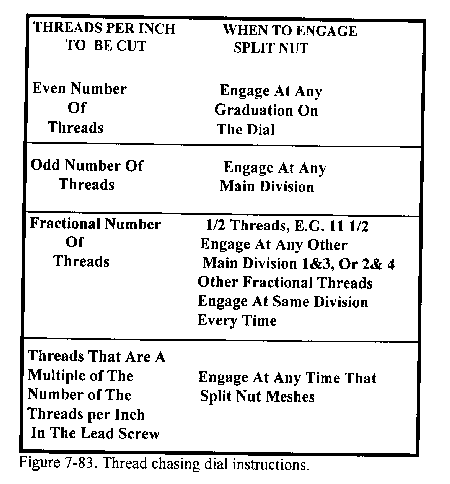Neil I know that during my time writing tech manuals and tour brochures seeing them over and over again.
XD351. I considered that BUT over the last few months we have been through much regarding a lot to do with so much regarding both magazines. Web downloads, access, postal issues this is not good and those who may not see the flaws in this article and are new could be turned off just as I was many many years ago as a very young lad.
Trevor has used the title "Using a Thread Dial Indicator"! yet has left out so much in his descriptive working of and jumped to checking of the Thread dial Indicator. Leaving out the half nut interaction with the hand wheel to move the carriage/saddle. He states about doing it from "a first principles" and wanting I gather to make it easier for those as confused as he was when he started out. I still am a novice but as stated have much background and training.
He mentions installing the TDI and lining it up to mesh with the lead screw?? I can not see how fiber washers would in anyway make lining it up on installation to mesh with the lead screw?? There is no mention of ever moving the dial indicator in or out to engage it or disengage it only about the half nut.
There is No photo showing TDI meshing with the leadscrew just the top of the TDI's.
The sentence & paragraph I had to read 4 times "With the half-nuts engaged the carriage, with the indicator, moves with the threads on the leadscrew and the indicator doesn't rotate"
The statement previous to that gives the indication he has the TDI engaged or meshed!
2nd sentence " But when the half-nuts are disengaged the indicator dial rotates as the carriage moves along the bed"!! That is impossible, if the half-nuts are disengaged the saddle will not move and hence the TDI will not either. Un;ess you leave the TDI meshed with the leadscrew and use the hand wheel to move the carriage, yet no explanation in doing so.
From there on further statements are made regarding the correct use of the TDI but with no explanation only use of the half-nut and its use. Although he does say "leaving them engaged".???
In checking the travel distance there is no mention of using the hand wheel to move the carriage/saddle don't forget he's trying to describe to novices those who are looking for guidance.
From there as Neil spotted poor layout/continuity of the article.
I struggled to continue to read through but did from there on. I was hoping to find something about using the TDI itself not mathematical formula nothing to do with the TDI itself.
Edited By Raymond Sanderson 2 on 12/05/2018 14:35:49
Edited By Raymond Sanderson 2 on 12/05/2018 14:38:23
 JasonB.
JasonB.







